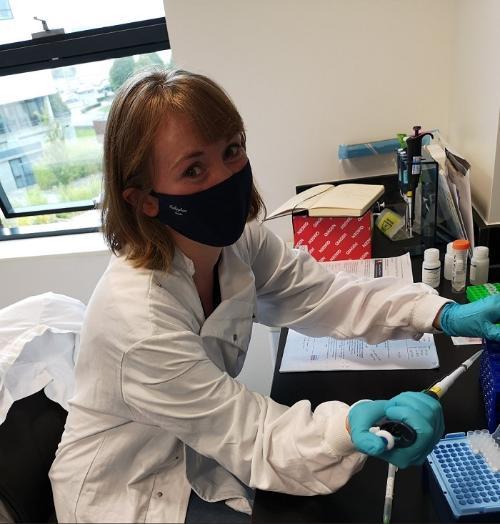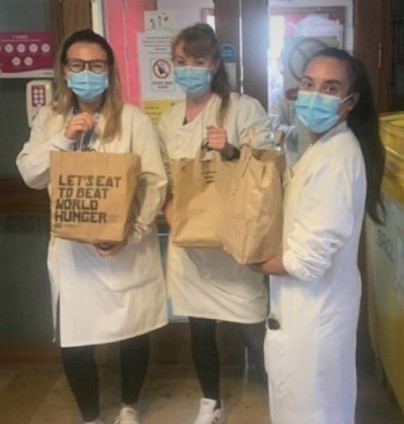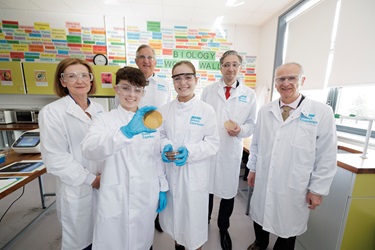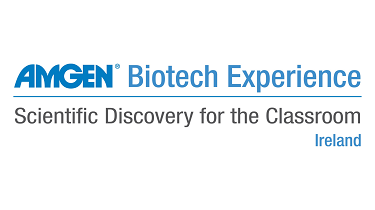A Day in the Life of a Medical Scientist

Maud Gilligan, at her bench in SBI earlier this year.
When starting Trinity College Dublin’s MSc in Molecular Medicine in the autumn of 2019 as a part-time student and full-time medical scientist, I was blessed not to have any foresight into the two years that were to follow. The first year of the program was predominantly lectures, which were interesting and varied. The second year, of course, was marked by emergency measures and pandemic restrictions. Therefore, I consider myself very lucky to have been able to undertake a project in epigenetic dysregulation in paediatric leukaemia with the Bond group, a collaborative paediatric leukaemia research team across Children’s Health Ireland, Crumlin and System’s Biology Ireland, UCD.
Upon qualification as a medical scientist with a double major in haematology and transfusion medicine in 2017, the only thing I knew for certain was that I wanted a job that was both challenging and engaging. The haematology laboratory in the since rebranded Children’s Health Ireland, previously Our Lady’s Children’s Hospital in Crumlin, has more than met that brief and continues to do so. There are two divisions of the laboratory within the hospital; the Department of Paediatric Laboratory Medicine (DPLM), encompassing the five traditional pathology disciplines of histology, microbiology, transfusion science, haematology and biochemistry, alongside the Department of Clinical Genetics, responsible for molecular analysis and cytogenetics.
The reason I thoroughly enjoy my job is the variety that the workday presents. Typically, training begins on the routine haematology benches, with every scientist achieving competency initially in analysis of full blood counts, routine coagulation testing and blood film morphology before progressing to more specialised techniques. As the referral centre for haematological disorders, testing for both benign and malignant blood disorders is then performed using a huge variety of methods. For example, immunophenotyping in our flow cytometry laboratory helps in diagnosis and classification of new leukaemia cases identified in children. Our HPLC lab is responsible for screening and monitoring haemoglobinopathy patients, such as sickle cell disease, and red cell enzyme disorders, like G6P deficiency. Our coagulation laboratory detects coagulation factor deficiencies and is often employed to screen high-risk neonates with a family history of severe haemophilia at birth.
More and more, an ever-emerging appreciation for genetic testing is integrated into our diagnostic workups, allowing for the potential for incorporation of targeted therapies and precision medicine. Genetic analysis also allows for more precise disease stratification and categorisation. This integration offers a truly exciting opportunity to improve patient outcomes and selection of the most appropriate treatment option on a case-by-case basis. It’s a very exciting time to work in a diagnostic environment, watching the transition from traditional to targeted medicine and observing the undeniable improvement in event-free and overall survival to our patients. This was a serious influence when it came to picking which masters program I’d like to do.

Maud (centre) is pictured here with coworkers at CHI, Crumlin, during the first Covid-19 lockdown after receving food from a local restaurant.
At the peak of my course, I was in the lab in SBI working on my project two days a week, completing online lectures two afternoons a week and working between two and five days a week in the haematology lab in Crumlin, including overnight call shifts up to 21 hours long! While I can’t pretend that the schedule wasn’t completely hectic between work and exams and assessments and project work, I consider myself one of the very lucky ones to have at least been able to spend lockdowns with great company and was extremely grateful at many points over the last two years for the constant kindness of colleagues and friends in both SBI and CHI.

